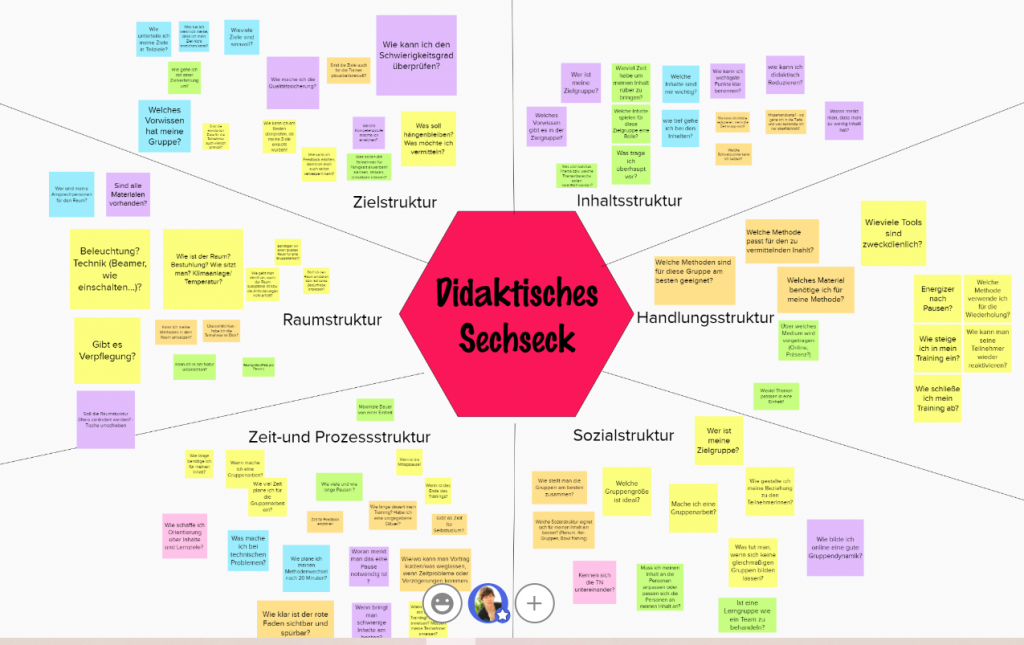Why planning and quality go hand in hand

„Planning is half the battle“ is a saying that also applies to the matter of training design. In order to be able to successfully design learning processes, I make numerous preliminary considerations that help me as a trainer to obtain clarity in advance about the content, the methods, but also the group and the necessary spatial conditions.
The clearer I define this framework, the more consciously I can make adaptations which are necessary in the process without losing sight of the essentials. As the saying goes, planning is only half the battle; the other half is the ability to view the planning structure not as a corset, but as an orientation framework that ensures the quality of learning processes.
A training design is a structured planning tool
It supports me as a trainer in thinking about different levels that are important for the learning process. It encourages you to think specifically about learning objectives, learning content and methods. In this explanatory video, I use the method of building a house to explain why thoughtful planning is important in training as well. The metaphor of the cooking recipe also sums up the basic idea of planning well.
The didactic hexagon in general
The didactic hexagon is a model on which the training design is based. This comprises the basic aspects that should be considered in planning. The individual corners of the hexagon do not stand alone, but are interconnected and should always be considered together. Thus the contents cannot be decided without learning objectives, the methods cannot be chosen without knowing the spatial conditions or the time frame.
Each corner invites the posing of specific questions. In seminars such as Toolbox A, we work out these questions together with the participants. Here is a small insight into the results.

As a reader, you are probably asking yourself this question:
- But how exactly do I go about it?
- How do I use the didactic hexagon?
- At which corner of the didactic hexagon do I start planning?
1. The target structure
From my experience, it helps to see the learning objectives as the central point of orientation and also the starting point of the planning process. To create the goal structure, we define clear learning objectives. There are several ways to do this. It should already be clear in the clarification of the assignment which training needs lie behind the planned seminar, i.e. which goals the participants should achieve and what they should be able to do at the end of the seminar. In a conversation with the client, it may become clear that they themselves have not given much thought to this and that their needs are very much related to the subject matter. In this case, it is important that we as trainers ask the right questions to find out which skills are important for the participants in practice and what they should be able to do at the end. Ideally, I also get in touch with the participants to find out if the objectives match their needs. Why learning objectives are so important and how they can be phrased will be the topic of the next #dimi_06, right after the summer break.
2. The content structure
If the learning objectives are clear, it is usually easier to decide which content and areas of knowledge need to be covered in the seminar and which I can safely discard. I can only achieve this reduction if I keep the learning objectives and the target group in focus. The simple rule of thumb usually applies: less is more. The quality of learning increases when I manage to focus on the essentials and give the central content enough time to be comprehensively developed by the participants. More about this in #dimi_07. By the way, here’s a checklist for seminar planning.
3. The action structure
Under action structure we subordinate all questions that concern the HOW of learning. How do I design the training process? Which methods can I use to support the participants in achieving the learning goals? Which methods fit the target group? Let’s assume – as described in #dimi_03 – that learning is an active process. Then the structure of action is about how I, as a trainer, can create learning spaces in which the learners intensively engage with the learning content. For example, I can plan a case analysis in which the participants analyse current newspaper articles on a trade union issue on the basis of certain subject-related criteria or give a „flaming speech“ on the topic of a 60-hour week. Methods support the process of knowledge acquisition, interrupt the single-track transmission of knowledge and help to anchor the knowledge and transfer it into one’s own practice.
4. The social structure

In addition to the action structure, the social structure, often also called social form, is an important criterion in planning the learning process. The basic forms such as small group or whole group are particularly well known. When using small groups, I think more carefully about the size of the group, but also about the composition of the group. I ask myself whether it makes more sense for the task at hand to bring together people with different levels of prior knowledge, whether I leave the assignment to a group up to the participants or whether it makes sense to divide the group up according to certain criteria. #dimi_14 deals specifically with the topic of group work. In general, it can be said that it is beneficial to the learning process to use different social forms and to offer a changing learning setting. Individual work phases should not be forgotten either. Especially for learners who are rather introverted, individual tasks can be helpful. If I give the learners the time to deal with a topic individually, I observe that quieter participants often become more actively involved in the discussion as a result.
5. The time and process structure
Another planning element is the time and process structure. The time structure refers to the question of the total duration, but also to the length of the learning units. Is the training a single event or integrated into a longer course? These aspects determine whether I start with a recapitulation, for example, or how much time I allow for the participants to get to know each other and gain trust in each other. Also, don’t forget to plan sufficient breaks.
6. The spatial structure
Spatial structure seems to be a relatively clear concept. When planning a seminar, it is important to know about the general conditions, e.g. how big is the room, how is it fitted with seats or how much flexibility there is in rearranging the room. Of course, these questions must always be answered with regard to the chosen learning methods. Another relevant question is whether there are other group rooms or, for example, coffee tables or a garden area that can be used for training.
A training design is nothing more and nothing less than a structured planning tool in which the levels of the didactic hexagon are taken up. You can find different templates here. I find the version with a time formula practical, as it makes it easier to „fiddle around“ and make changes.
Well thought-out planning is a tool for quality assurance. But it is also a kind of „script“ in which I write down all the necessary stage directions. This is especially helpful when I am not training alone but in a team or when a seminar has to be taken over spontaneously by someone else. I can also make notes about what worked well and what didn’t work so well during or after the training – then I’m ready for the next training session.

I wish all readers a nice and relaxing summer. I’m looking forward to the other articles in autumn.
Want to read more?
- Allespach, Martin; Meyer, Hilbert; Wentzel, Lothar (2017): Politische Erwachsenenbildung. Ein subjektwissenschaftlicher Zugang am Beispiel der Gewerkschaften. 2. Auflage. Marburg: Schüren.
- Langheiter, Anna (2018): Trainingsdesign. Wie Sie gut durchdachte, lebendige und passgenaue Weiterbildungskonzepte entwickeln. Bonn: managerSeminare Verlags GmbH (Edition Training aktuell).
- Reinmann, Gabi (Hg.) (2015): Didaktisches Design. Studientext. Universität Hamburg, zuletzt geprüft: 18.6.2021. Access here online.
The above-mentioned books (and others) can be ordered free of charge from the ÖGB-Verlag webshop HERE.
Author: Margret Steixner
Lust auf mehr? Zu allen Beiträgen der Serie kommst du HIER!

Dieses Werk ist lizenziert unter einer Creative Commons Namensnennung-NichtKommerziell-Weitergabe unter gleichen Bedingungen unter gleichen Bedingungen 3.0 Österreich Lizenz.
Volltext der Lizenz

Dieses Werk ist lizenziert unter einer Creative Commons Namensnennung-NichtKommerziell-Weitergabe unter gleichen Bedingungen unter gleichen Bedingungen 3.0 Österreich Lizenz.
Volltext der Lizenz

